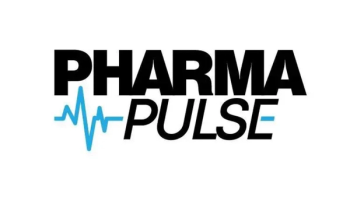Key Takeaways
- Real-world data enhances medication safety and supply chain efficiency. By collecting and applying data from manufacturing through administration, stakeholders can optimize inventory, track usage trends, and improve predictive analytics to ensure medication availability and safety.
- Advanced tracking technologies like RFID improve visibility and reduce risks. Continuous, real-time monitoring enables more accurate inventory management, helps prevent tampering or temperature breaches, and supports better coordination across the supply chain—especially for sensitive or high-risk medications.
- RWD supports resilience during disruptions and reduces waste. Intelligent medication management systems using RWD help hospitals forecast demand, respond to crises, and minimize medication expiration and loss, ultimately improving patient care and operational efficiency.
From the moment pharmaceuticals are manufactured, through the complex journey they take to administration, stakeholders generate and acquire a wealth of data. The FDA oversees over 23,000 prescription drug products approved for marketing in the US1 and ultimately, an estimated 361.3 million drugs are given or prescribed annually in hospital emergency departments alone.2
When transformed and channeled into the right tools, this raw data can help ensure medications are safe and well-managed. Drug tracking data, purchasing information, and usage trends can all be meaningfully applied to build models that generate actionable insights that enhance efficiency, ensure that therapies are available when and where they are needed, enable smarter inventory control, and improve predictive analytics.
Applied correctly, approaches driven by real-world data (RWD) can benefit the entire medication supply chain and facilitate an improved focus on patient-centered care.
Treatment RWD and regulatory compliance
The path between drug manufacturers and end-users is fraught with opportunities for medicines to be tampered with, go missing, or be mismanaged. RWD is at the center of efforts to make supply chains safer and more transparent, including increased regulatory requirements. The Drug Supply Chain Security Act, for example, requires enhanced pharmaceutical traceability through the collection and sharing of data related to the movement of medications. This includes requirements for drug data storage and the maintenance of interoperable systems for sharing data, along with requirements for the data that must be stored on treatment labels. Together, these requirements create a foundation of RWD that stakeholders can leverage to improve supply chain operations and safety.
Enhancing supply chain visibility through real-time data tracking
Traditionally, tracking medicine inventory relies on manual barcode scanning as products pass specific checkpoints. While this technology is the industry standard, it can leave blind spots between scans where medications are largely unaccounted for. Thus, advancing technologies that allow for continuous monitoring of meds are becoming more common in pharmaceutical supply chains. Radio frequency identification (RFID) technology, for example, uses small radio frequency identification devices to track and identify products. RFID tags don’t have to come into a direct line of sight with sensors, allowing tags to be counted and logged with minimal effort and high accuracy.
Importantly, rapidly advancing RFID technology could also unlock additional security and safety capabilities by monitoring and reporting changes in temperature or possible tampering. This is especially critical for temperature-sensitive biologics and vaccines, where maintaining proper storage conditions ensures product viability and regulatory compliance.
Enhanced, continuous supply chain visibility is one of the most important elements of a safe, intelligent medication ecosystem. Real-time tracking technologies and continuous monitoring data can improve supply chain efficiency by providing up-to-the-minute insights on drug shipment logistics and creating a clear chain of custody. This is particularly important for sensitive medications such as controlled substances, which can be at a higher risk for counterfeiting and diversion. This data can also enhance cooperation across the supply chain, feeding software systems to generate trend analyses and optimization opportunities. For example, a hospital system could enact conservation protocols for a frequently used drug, based on data from a supplier that some medicines may be entering a shortage due to increased demand.
Demand forecasting during public health crises and supply chain disruptions
Over the last five years, it’s become clear that medication supply chains will continue to be disrupted, and patients will continue to need their treatments. Disruptions such as pandemics and natural disasters pose a major challenge for hospitals. In some cases, these events might be entirely unpredictable, forcing them to adapt product strategies with little to no advanced preparation. Luckily, intelligent medication management software can play a crucial role in responding to disruptions.
Similar to cybersecurity incident responses, advanced algorithms (such as multi-integer linear programming) can model and mitigate disruptions; incorporating RWD can improve these models. Historical data, such as real-time supply chain and inventory data and information about past drug shortages, is essential to enabling models to generate accurate and actionable insights. In the same way that inventory-tracking data is critical for manufacturers and distributors to ensure the safe transport of medications, information about their status and location within a facility or system is critical to hospitals. Armed with these insights, hospitals can optimize resource distribution in emergencies, adjust supply forecasts, predict recovery patterns, and develop strategies to mitigate future risks.
Expiration tracking and waste reduction
In addition to ensuring they have the right medications during a supply chain disruption, hospitals need to optimize inventory and mitigate waste during normal operations. Many hospitals must pay for expired drugs in their possession, even if they aren’t used. As a result, pharmacies will walk a thin line, maintaining just enough of the therapy to avoid running out but not so much that it is at risk of expiring before it can be used. Tracking the status of medication inventory—including which ones are closest to expiration and where they are—is an essential element of hospital pharmaceutical management.
However, this is not always a simple task. Large hospital systems, for example, have medications distributed among many different pharmacies and departments. They also experience some of the same problems that manufacturers and distributors face, like spotty tracking information due to the manual processes associated with barcode scanning of drugs.
To manage this, healthcare organizations are increasingly implementing proactive medication management strategies, blending hardware updates (such as improved RFID tags and smart cabinet systems) with software upgrades that can maximize RWD insights. Data generated from RFID tracking enables close monitoring of lot numbers and expiration dates, allowing facilities to optimize inventory usage and efficiently respond to recalls. In the case of managing near-expiry stock, hospitals can ensure they use medications close to expiry first and redistribute stock accordingly. Longer-term insights from RWD-powered analytics can save hospitals millions of dollars annually by minimizing waste, optimizing operational efficiency, and preventing costly errors.
The future of RWD in pharma supply chain management
To fully leverage RWD moving forward, pharmaceutical and healthcare organizations must embrace opportunities to strengthen and improve their models. This includes participating in data-sharing initiatives and contributing to centralized datasets. While synthetic data can be used for model training, real-world data is crucial for accurate predictive analytics, and cooperation between the industry at large can vastly improve the quality and robustness of data sets. Additionally, advancements in AI and cloud computing present opportunities to enhance supply chain intelligence. Preparing for the future of medication supply chain management includes anticipating these technologies while putting necessary security and protections in place.
The integration of RWD into the pharmaceutical supply chain management is an exciting development. It offers opportunities for cost reduction, efficiency gains, and a shift to more patient-focused care. As computational power continues to grow, life sciences organizations can harness these advancements to build more resilient and adaptive supply chains.
About the Author
Jeff Webber is Chief Technology Officer at Intelliguard.
References
1. FDA at a Glance. FDA. https://www.fda.gov/economics-staff/fda-glance
2. Therapeutic Drug Use. Centers for Disease Control and Prevention’s National Center for Health Statistics. https://www.cdc.gov/nchs/fastats/drug-use-therapeutic.htm






